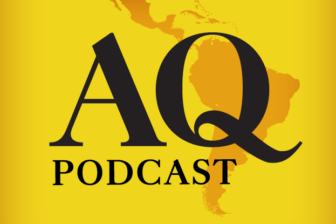It is said that when Hernán Cortés landed in Mexico in 1521 and realized the difficulty ahead, the later named First Marquis of the Oaxaca Valley ordered the sinking of his own fleet to prevent the crew from abandoning the mission. And since then, when you are desperate, the popular saying “sink or burn your ships” reminds you that there is no turning back.
In a Twitter post in March I thanked previous reforms that had left Mexico on a strong footing.
If it weren’t for all the buffers that the now infamous neoliberals made possible over decades, Mexican economic stability would be drifting away. Getting rid of those buffers is tantamount to sinking our ships. These safeguards, together with the USMCA — for which you can also credit neoliberal influence — have anchored expectations in Mexico. Those buffers are the tools that allowed the current administration to manage the huge gap between growth expectations and actual economic performance (GDP in 2019 decreased 0.3% versus an expected 2.5% growth) as well as the possibility of surviving the historic economic crisis in 2020. We must include in this economic cushion the 109 fideicomisos, dedicated funds regulated by law since 1931 that provide certainty to projects that need multiannual budgets. This year, those funds were instead used to provide the government with immediate liquidity — to the order of $3.4 billion — in detriment of existing programs including pensions, infrastructure, education, science and technology, and international cooperation.
The Central Bank projects Mexico’s GDP will shrink by 8.9% in 2020 and that debt to GDP ratio will be above 57%, or 11 percentage points more than what was approved by Congress in 2019. This would not be a dramatic increase if there had been a fiscal stimulus program. But, contrary to what the rest of the world is doing and to what the IMF, the World Bank, the OECD and the ECLAC have recommended, Mexico has been the only emerging economy and G20 member to challenge the laws of gravity and deliberately make the decision not to devote fiscal resources to assist its population at this acute time. For comparison, fiscal stimulus accounted for more than 13% of the U.S. as well as Germany’s GDP, and in Latin America, Brazil has spent the equivalent of 12% of its GDP while Colombia, Chile and Peru, have done so at the rates of 2.8%, 4.7% and 6%, respectively. The number in Mexico is shocking: The 15th largest economy in the world, with 70% of its population in a situation of vulnerability either for poverty or age reasons, has dedicated only 0.7% of its GDP to address the worst health and economic crisis in its history. The fiscal conservatism defended by President Andrés Manuel López Obrador’s (AMLO’s) government is based on the false premise that they have not taken on more debt, when the reality shows that the debt to GDP ratio will increase by $65.3 billion this year alone.
All the economic buffers have already been used. Mexico’s economic future is compromised, potential growth is seriously damaged, but perhaps more worrisome, no fundamental changes are foreseen in two areas that could be potential game changers: investment climate and energy. USMCA is a formidable anchor for certainty, but soon the first labor and environmental controversies will arise to test the brand-new dispute settlement mechanism with its fast-track feature and its reinvigorated panels.
The expectation was that 2021 would bring a positive surprise: As the Central Bank recalculates the country’s international reserves after a currency depreciation, in April the treasury could expect an extra injection of liquidity and an increase in the value of foreign currency denominated assets. With the exchange rate at its current level of fewer than 20 pesos per dollar, this scenario is fading away. Instead, by April we will start to witness other countries — the ones that put in place the right policies, who protected their citizens, who prioritized life, who safeguarded employment — at the dawn of sustained economic recovery while our ship takes on water.
If there is a year that will set the AMLO administration’s feet on the ground, it’s 2021. That is when he, and most importantly all Mexicans, will start to realize there are no more economic safety nets and all of our ships have sunk. The administration says it will then, in its own words, move beyond dismantling the old system. The problem is that there is no plan for construction — only a hope that the destruction of the past will bring results. This combination of lack of vision for the future and a lack of resources to implement any vision at all leads to one unfortunate conclusion: The future of Mexicans is compromised.
—
Rubio is a former senator in Mexico and a former deputy minister for foreign affairs, social development and finance. (@VRubioMarquez)









